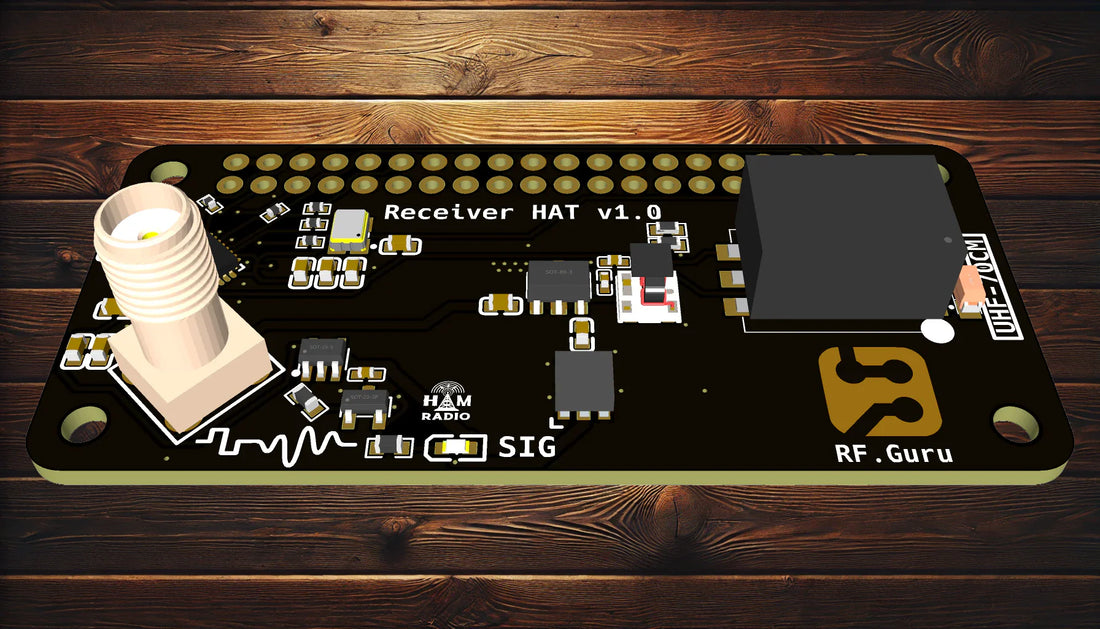Welcome to the first post on The Guru's Lab blog! In this post, we’ll dive into how we measured the 12 dB SINAD sensitivity of our upcoming UHF RX module, designed for iGates and SVXLink RX repeater modules. Using our tool, SVXSpotSINAD12, we were able to characterize the receiver’s performance with precision.
Why Measure 12 dB SINAD?
SINAD (Signal-to-Noise and Distortion) is a key metric for evaluating a receiver’s sensitivity. The 12 dB SINAD threshold is commonly used to determine the lowest RF signal level where the receiver still provides intelligible audio. This is critical for ensuring reliable communication in SVXLink-based repeaters and iGate systems.
Setting Up the Test
To measure the UHF RX module’s sensitivity, we used the following setup:
- Signal Generator: Set to 2.5 kHz deviation with a 1 kHz tone.
- SVXSpotSINAD12: Our custom measurement script.
- UHF RX Module: The DUT (Device Under Test), part of our iGate/SVXLink RX system.
- Linux-based Host: (our Transceiver/Receiver or Hotspot is linux based, aka Raspberry) To run the scripts and record measurements.
Step 1: Configure the System
We first set up the configuration for the measurement script:
./sinad_hotspot_config
For VHF measurements, the configuration file needed manual adjustments.
Step 2: Calibrate the Audio Level
Before running the test, we ensured the audio level was properly adjusted using:
./sinad_hotspot_volume
Step 3: Run the Measurement Script
With everything configured, we launched the main script:
./sinad.sh
This script continuously samples the receiver every 5 seconds, capturing SINAD12 values in real time.
How to Determine 12 dB SINAD Sensitivity
As the script runs, we gradually adjusted the signal generator’s output power. The goal was to identify the exact power level where the script reports 12 dB SINAD.
- Once the script displayed 12 dB SINAD, we noted the signal generator output power.
- This output power corresponds to the 12 dB SINAD sensitivity of the receiver.
Our Findings
For our UHF RX module, we observed that 12 dB SINAD was reached at -120 dBm, showcasing the module’s excellent sensitivity in practical deployment conditions.

For our VHF RX module, we observed that 12 dB SINAD was reached at -115 dBm, showcasing the module’s excellent sensitivity in practical deployment conditions.

Why This Matters for SVXLink & iGates
A well-calibrated and sensitive receiver is critical for iGates and SVXLink repeaters to ensure:
- Reliable reception of weak signals.
- Optimized range for digital voice/data applications.
- Reduced packet loss in APRS and digital modes.
Conclusion
Using SVXSpotSINAD12, we effectively characterized our UHF RX module’s real-world sensitivity, helping us validate its performance for iGates and repeater operations. This process ensures our systems operate at peak efficiency, maximizing coverage and reliability.
Stay tuned for more technical deep dives on The Guru's Lab!
Get Involved
Interested in testing your own hardware? Check out SVXSpotSINAD12 on our GitHub repository and let us know your findings!
Article written by Joeri Van Dooren, ON6URE – RF engineer, antenna designer, and founder of RF.Guru. With extensive experience in active and passive antenna systems, high-power RF transformers, and custom RF solutions, Joeri shares insights into cutting-edge radio communication technologies.
